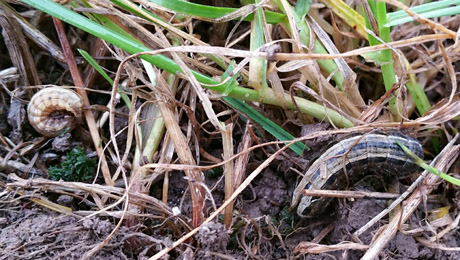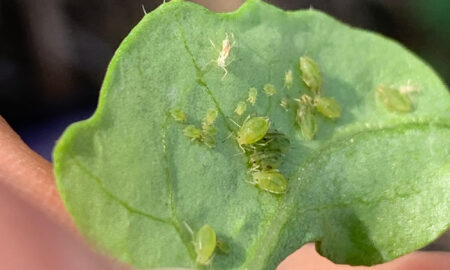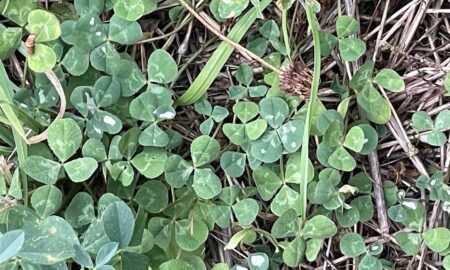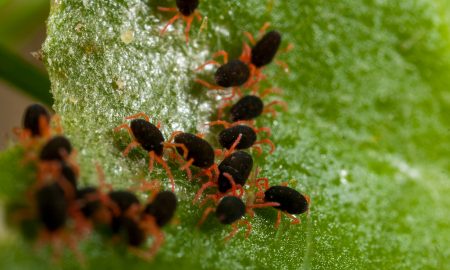Large numbers of armyworm-like caterpillars – Proteuxoa (or Peripyra) sanguinipuncta – have been found stripping out patches of a ryegrass pasture.
Where have they been reported?
Very large densities of armyworm-like caterpillars have completely stripped out the green leaf content of a ryegrass pasture south east of Ballarat in Victoria’s Central District.
The larvae were mostly in their sixth or final life stage where food consumption is greatest.
The larvae were found by day curled up at the base of plants with telltale green pellets of frass or excreta. These are signs that the caterpillars were nearing the end of their feeding frenzy.

About the pest
Armyworms are a broad group of noctuid caterpillars that mostly feed on grasses, cereal and rice crops.
The larvae are identifiable by three parallel white stripes along their body. In the less common event of extreme food depletion and crowding, they will ‘march’ in a front across or out of crops and pastures in search of food, which gives them their name ‘armyworm’.
The better-studied armyworms include a number of genera such as Leucania, Spodoptera and Persectania.
However, the caterpillars in this outbreak appear to be a species, Proteuxoa (or Peripyra) sanguinipuncta, which previously has not been classed as an armyworm. They have the three thoracic and abdominal stripes typical of armyworms but also a diagonal white marking towards the tail end.
Nothing is known of the pest status or management of the genus Proteuxoa.
For comprehensive information on the more common armyworms, including their occurrence, lifecycle, behaviour, damage symptoms and management strategies, go to armyworm within the new PestNote series.
Our advice
Armyworms tend to lay in clumps resulting in high densities within defined regions.
Because of their propensity to march or search for better food reserves, armyworms tend to congregate on the outer edges of damaged grass patches.
Spot spraying with a registered product on the outer edge of these patches is likely to contain them.
Unnecessary spraying can advantage the next generation of caterpillars by removing their natural enemies.
Acknowledgements
Source of field reports of armyworms
Stuart Kemp – Consultant, PastureWise (Victorian Central District)
Cover image: Photo by Josh Brown





